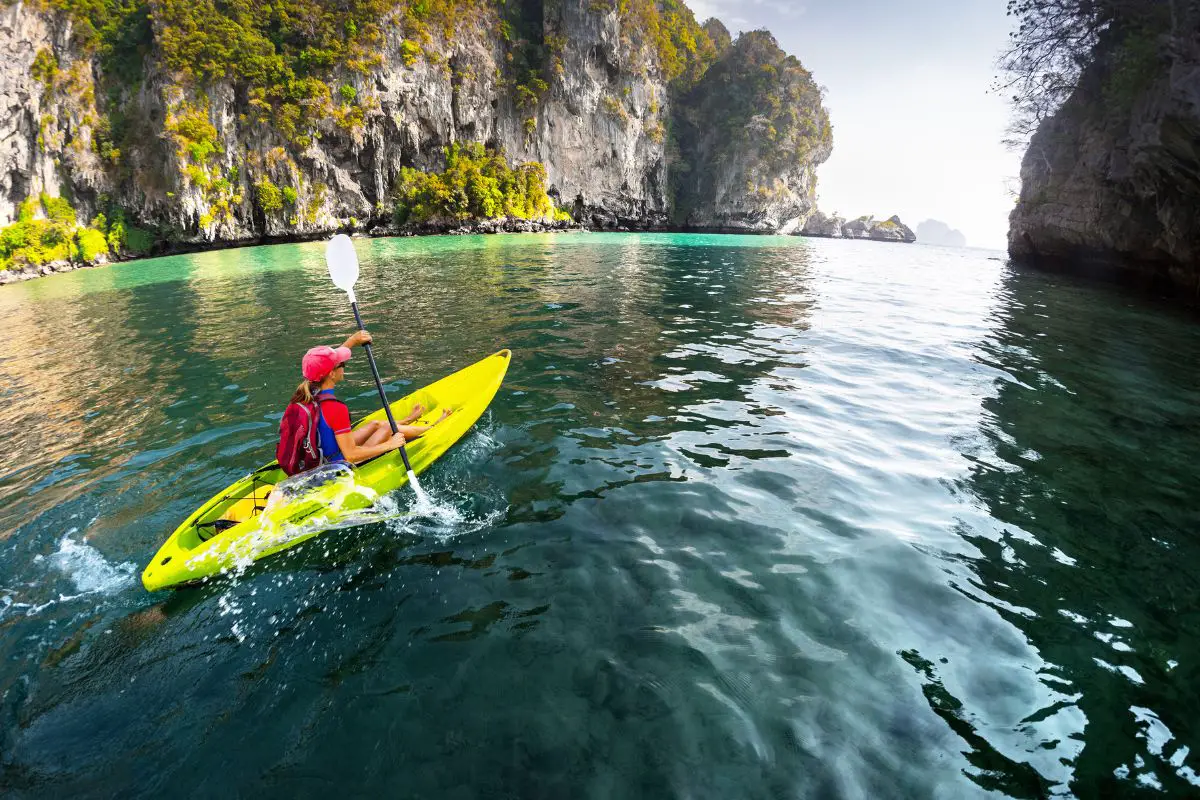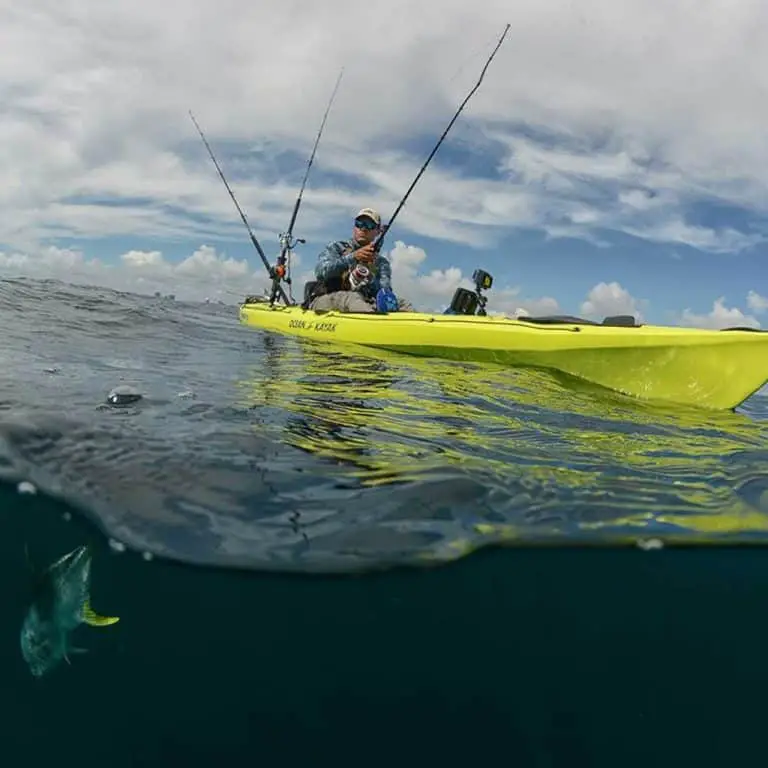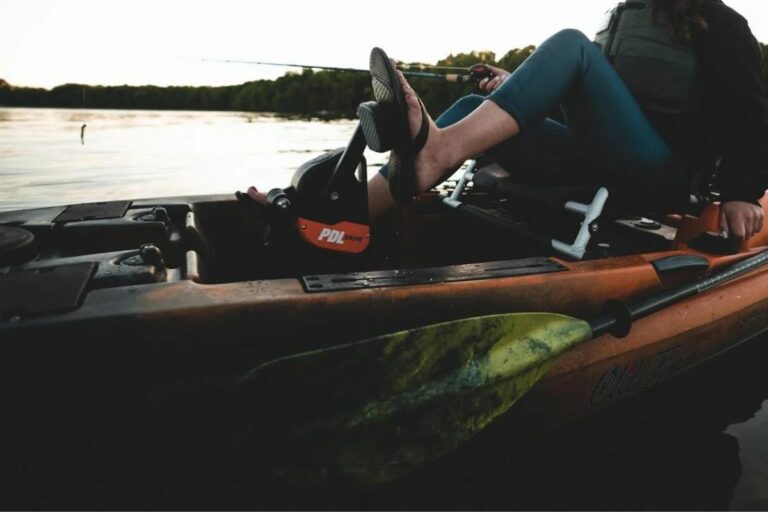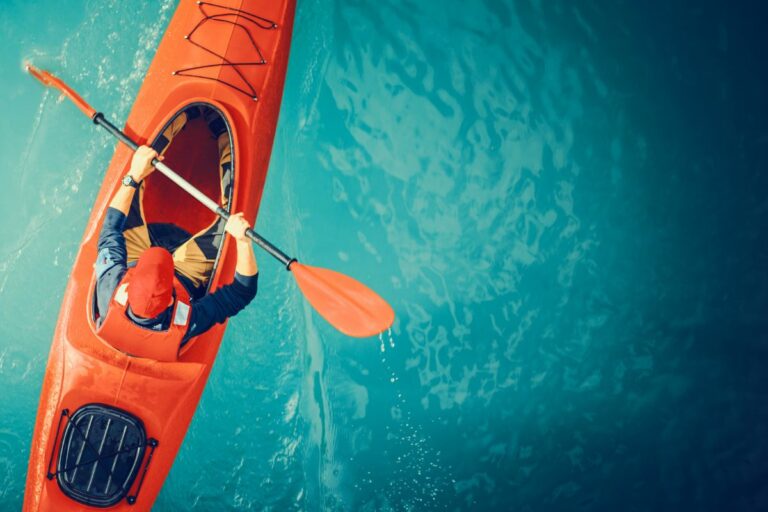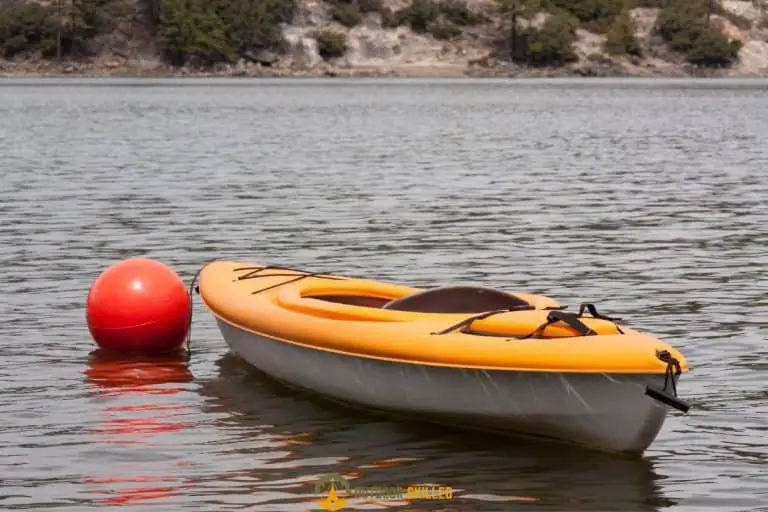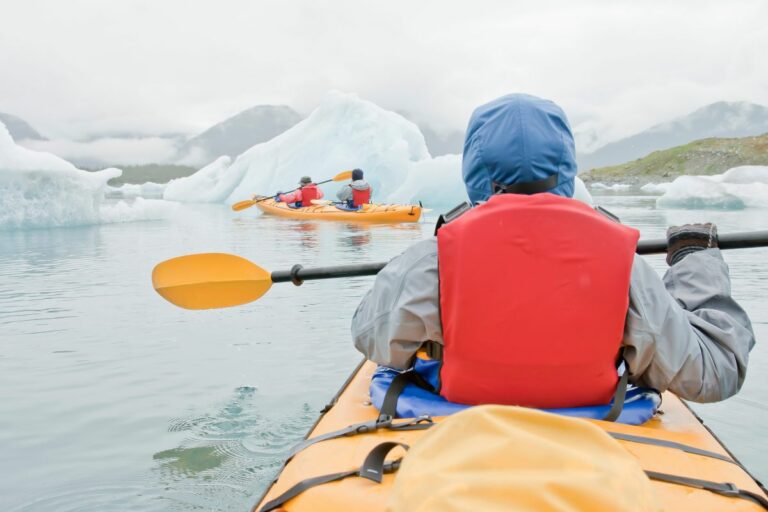What Is the Average Kayak Speed? [Max Speed Calculator Included]
Whether you’re leisurely paddling or participating in an intense competition, kayaks are versatile vessels that offer a unique and thrilling experience on the water.
One of kayaking enthusiasts’ most commonly asked questions is whether kayaks can go fast and how fast they can go. So, what is the average kayak speed?
The average kayak speed ranges from 3 to 4 miles per hour. Various factors affect the speed of the kayak, including kayak type, paddle type, weight onboard, weather and water conditions, and the paddler’s skill level.
Keep reading to learn more about the factors that affect the kayak’s speed and how to make your kayak go faster.
Table of Contents
What Is The Average Kayak Speed?

The average kayak speed is typically between 3 to 4 miles per hour. This speed can range depending on various factors related to the kayak’s design, the equipment used, environmental conditions, and the paddler’s skill.
Factors That Affect Kayak Speed
As mentioned before, several factors affect kayak speed, and it’s important for kayakers to understand them to be able to optimize their kayak performance.
So, let’s break down these factors in more detail:
Kayak Type
The type of kayak can have a significant impact on its speed.
Longer kayaks tend to be faster than shorter ones, and kayaks with a narrower beam (width) tend to be faster than those with a wider beam.
For example, touring kayaks and racing kayaks are typically longer and narrower than recreational kayaks, making them faster and more efficient.
Paddle Type
The type of paddle used can also affect the speed of a kayak.
For example, paddles with a larger blade surface area can generate more power, but they can also be more tiring to use over long distances, while paddles with a smaller blade surface area can be easier to use for longer periods, but they may generate less power.
The material of the paddle can also affect its weight and stiffness, which can impact the paddler’s ability to generate power.
Weight Onboard
The kayak’s weight and any gear or equipment onboard can also affect its speed (This also includes the Kayakers’ weight).
The more weight there is onboard, the slower the kayak will be. This is because the added weight creates more drag and makes it harder to propel the kayak through the water.
So, it’s important to balance the weight of the gear and equipment to avoid affecting the kayak’s speed and stability.
Weather and Water Conditions
Environmental factors like weather and water conditions can affect the speed of a kayak.
Strong winds, waves, and currents can slow down the kayak and make paddling difficult. Conversely, calm water and a tailwind can make paddling easier and increase the kayak’s speed.
So, it’s important to pay attention to the weather and water conditions and adjust your paddling technique and strategy accordingly.
Paddler’s Skill Level
The skill level of the paddler can also have an impact on the kayak’s speed.
A more experienced paddler will typically be able to generate more power and maintain a higher paddling cadence than a novice paddler, resulting in a faster kayak speed.
In addition, experienced paddlers are better able to navigate challenging water conditions and adapt to changes in wind and currents, allowing them to maintain their speed and efficiency.
The Maximum Hull Speed
Another factor kayakers need to take into account regarding the kayak’s speed is the theoretical hull speed, which is the maximum speed at which a kayak can travel without planing or rising up on the water.
The formula for calculating the hull speed is Hull Speed = 1.34 x square root of waterline length.
For example, a kayak with a waterline length of 16 feet would have a theoretical maximum hull speed of around 6.7 miles per hour. However, a kayak’s actual speed will depend on the previously mentioned factors.
Calculate the Maximum Hull Speed for your own Kayak using this tiny tool I created:
Kayak designers need to measure the maximum hull speed to understand the potential speed the kayak can achieve, so they can optimize the design and performance of the kayak. In addition, measuring the maximum hull speed can be useful for competitive paddlers who are looking to enhance their speed and performance in races.
Tips to Increase Kayak Speed

Increasing kayak speed can have a number of benefits, including covering more distance, improving race performance, or simply having a more thrilling kayaking experience.
So, here are some tips you can follow to increase kayak speed:
- Choose the right kayak: Selecting a kayak that is designed for speed can make a significant difference in your performance.
- Longer and narrower kayaks are generally faster than shorter and wider ones. However, keep in mind that a faster kayak may also be less stable, so choose one that matches your skill level and paddling goals.
- Use a more efficient paddle: Consider using a paddle with a larger blade surface area or a higher-quality material like carbon fiber. A more efficient paddle can help you generate more power and maintain a higher cadence.
- Improve your paddling technique: Paddling with proper technique can help you generate more power and speed. So, make sure you are using a good paddling form, such as keeping your arms straight and using your torso to rotate and generate power.
- Reduce drag: Minimize the weight onboard and reduce drag by tucking in your elbows and keeping your body low to the deck. Also, avoid dragging your paddle in the water during the stroke, as this can create drag and slow you down.
- Pay attention to weather and water conditions: Optimize your paddling strategy based on the weather and water conditions. For example, try to paddle with the wind or current rather than against it. Additionally, avoid paddling in strong winds or rough water if possible, as these conditions can slow you down and increase the risk of capsizing.
- Increase your strength and endurance: Building your strength and endurance can help you maintain a higher cadence and generate more power over longer periods.
- Consider incorporating exercises like weightlifting and cardio into your training routine to improve your overall fitness.
Remember, increasing kayak speed takes practice and patience. Incorporate these tips into your training routine and give yourself time to improve. With dedication and effort, you can increase your kayak speed and enjoy a more efficient, exhilarating paddling experience.
Kayak your way to Freedom
- On a budget? Check out the best fishing kayaks under $500 here and the best Fishing Kayaks under $1,000 here. Or Check the best Cheap Kayaks here.
- Going fishing? Here are the best Ocean fishing kayaks, and here are the best River Fishing Kayaks.
- You can also find the best Fly Fishing Kayaks here and the best Bass Fishing Boats here.
- A bit experienced? Check out the best modular kayaks here and the best tandem fishing kayaks here.
- Looking for something special? Check out my favorite Ducky kayaks here.
- Navigate your way with these awesome and beginner-friendly Kayak compasses.
- Going Hunting? These Duck hunting kayaks will give you an unfair advantage!
- Have a need for speed? These motorized kayaks will get you moving.
- Protect yourself from the sun with these Kayak shades, and make your kayak more comfortable with these Kayak seats.
- Keep your feet dry and warm with these superb Kayaking shoes.
- Going Kayaking in cold water? Stay warm with these Kayaking gloves.
- Paddle Less, Fish More with the Best Kayak Motors
- Looking to get a trolling motor on your kayak? Check out the best kayak trolling motor mounts here.
If you like this article, please share it or pin it, you can find the share buttons below. We will really appreciate it ❤️

